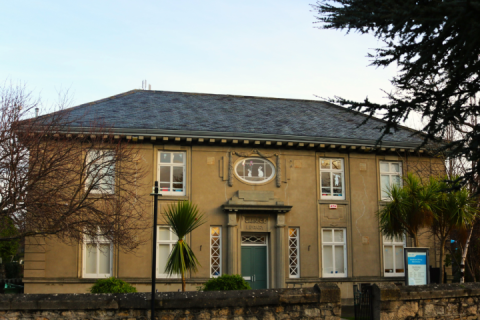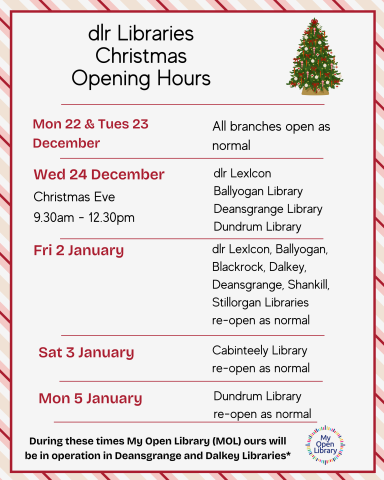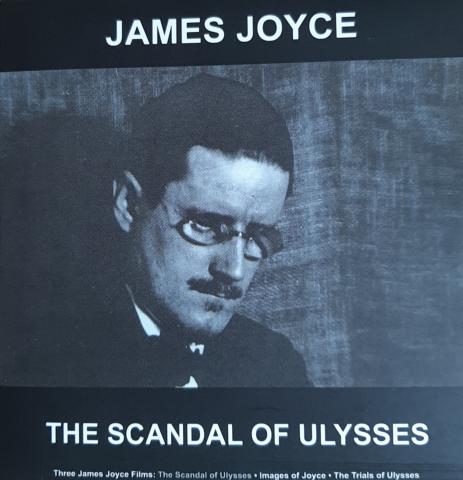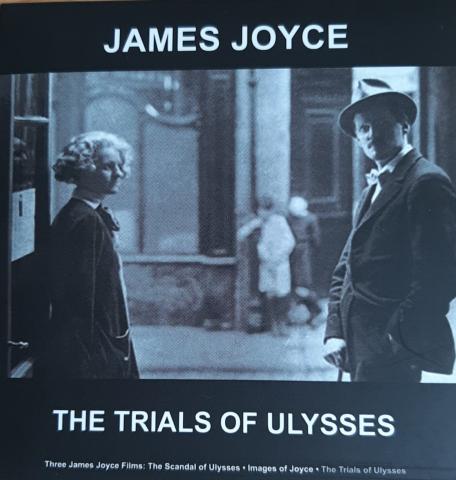Three Joycean films for Bloomsday
dlr Libraries present a unique opportunity to see:
Three Joycean Films by Bruce Arnold, a collaboration between the Friends of Joyce Tower Society and dlr LexIcon.
Screen times, all on June 15th and on view for the following week:
The Scandal of Ulysses 10.30 am
Images of Joyce 12.30 pm
The Trials of Ulysses 2.30 pm
These 3 films will be shown on Dún Laoghaire-Rathdown’s YouTube channel. See https://bit.ly/dlrYouTube at the advertised times and throughout the following week also.
dlr LexIcon in collaboration with our colleagues in The Friends of Joyce Tower Society offer a unique opportunity to see three rarely screened films on the life and work of James Joyce. These films, produced by Bruce Arnold in the 1990s explore stories and controversies which surround Joyce and his most famous work, Ulysses. These films have not been screened in public for many years. This is a unique opportunity to view all three. The Friends of Joyce Tower and dlr LexIcon are deeply grateful to Bruce Arnold for donating these films to the Tower and for his cooperation in screening them for Bloomsday 2020. Bruce will introduce the films to explain their context and their contribution to Joycean scholarship. He will be in conversation with Dr Seamus Cannon, Chairperson, Friends of Joyce Tower Society.
All films have been produced, scripted and narrated by Bruce Arnold. Directed by Ian Graham.
1. The Scandal of Ulysses (52 mins)
The Scandal of Ulysses is a filmed account of the controversy in the 1980s and 1990s over the so-called ‘Corrected Text’ of Ulysses.
Serious attempts were made by the James Joyce Estate from the early 1980s to secure what was thought might become ‘a definitive text’. The Scandal of Ulysses tells the story of that controversial and, in the end, defeated objective. Had it succeeded, the copyright in Ulysses would have been extended well into the twenty-first century. The story was complicated by the fact that James Joyce’s original copyright in the work, which passed to his heirs, came out of copyright fifty years after his death but was then covered by an extension under EU law. Copyright in Joyce’s works ended on 1 January 2012 and released all his books into the public domain.
The Scandal of Ulysses is a filmed account of the controversy in the 1980s and 1990s in which the trustees, family and scholars who supported the work of Hans Walter Gabler, editor of a version of Ulysses sub-titled ‘The Corrected Text’ were confronted by Gabler’s critics and many other scholars. The film gives an account of the conference in Monaco where the copyright issue was debated and includes interviews with major figures in Joyce Scholarship including Hans Walter Gabler, John Kidd, Michael Groder and the late Hugh Kenner.
2. Images of Joyce (40 mins)
Is Ulysses for the academics or for the ordinary reader? The film includes an aggressive encounter between the writer’s grandson, Stephen Joyce, and Brenda Maddox, author of Nora.
Every couple of years Joyce scholars gather to debate the latest in Joyce studies. They have been doing it since the mid-1960s. In 1990 they met in the Principality of Monaco where the Princess Grace Irish Library has for some time been a focus for serious study in a jewel-like setting on the Mediterranean more used to gambling with hard cash than with the works of a master writer. Under the patronage of the Grimaldi Family the location has become a modest centre of Irish literary and artistic studies.
Images of Joyce is a film about the lighter side of Irish academic pursuits. It includes an aggressive encounter between the writer’s grandson, Stephen Joyce, determined to protect the privacy of the family, and Brenda Maddox, author of Nora, the biography of Joyce’s wife. Nora was a source of indiscretions and unusual opinions about her husband’s book, Ulysses, which she never read. She was the model for Molly Bloom, one of the book’s main characters, whose outspoken sexuality is central to the development of his genius as a writer. The film contains interviews with writers and scholars and shows something of the unusual conjunction of Riviera glamour and arcane literary debate.
3. The Trials of Ulysses (49 mins)
A film documentary of the story of James Joyce’s epic masterpiece, Ulysses, throughout the twentieth century. It was made for the centenary of Bloomsday, the June day in 1904 which provided the fictional setting for his novel of Dublin.
Ulysses is James Joyce’s most famous creation and the most renowned work of fiction of the twentieth century. The Trials of Ulysses, shot in Dublin, Trieste, Zurich, New York and Philadelphia is a history and a biography of the writer and the creation of his masterpiece, including its copyright vicissitudes. The film recounts the book’s early battles against charges of obscenity with its banning in Britain and the United States. It portrays Joyce’s own trials as a writer, his long struggle with his magnum opus and his persistence in trying to have it made accessible to a mass audience.
The film succinctly retells the epic story that Ulysses, the novel, made across parts of the world. Like the eponymous hero of ancient times, taken by Joyce as his model, the story is eccentric, bizarre, moving and heroic. The film traces the gestation and birth of this classic work and its slow growth to maturity. The film also captures aspects of Joyce’s own life, his feelings about his writing and his struggle with a cherished masterpiece.
News
View all
Temporary Closure of Dundrum Library

Temporary Closure of Shankill Library
















